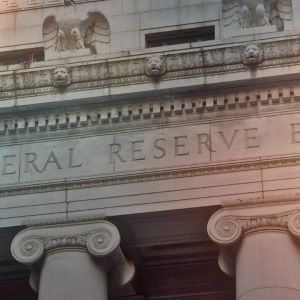The Federal Reserve’s reverse repo facility just hit a new low, and it’s a warning shot. On Thursday, only 14 participants parked cash in the Fed’s overnight reverse repurchase agreement window, dropping the total balance to $28.8 billion. That’s the smallest pile of cash seen in over four years, with the last time it was this low being April 2021, according to New York Fed data cited by Bloomberg. The sharp drop didn’t happen in a vacuum. The Treasury Department has been unloading short-term T-bills into the market at a heavy pace to rebuild its own cash reserve, sucking liquidity out of the RRP facility in the process. Investors are pulling cash from the Fed and chasing yields on those fresh government IOUs instead. The RRP is normally a pressure valve, a place for firms like money-market funds, banks, and government-backed enterprises to dump extra money overnight and earn a little back. Now it’s almost empty. The number of bidders on Thursday was also the smallest since 2021. At the end of July, the facility still held $214 billion, but that’s gone. And if the pace keeps up, analysts at Citigroup (Jason Williams and Alejandra Vazquez Plata) say it could drop to zero by the end of August. Fed may tap into reserves as RRP dries up Wall Street’s been watching these moves closely. When the reverse repo pool dries up, the next drain usually hits bank reserves, which are more critical than they sound. They’re the layer of protection keeping markets functioning. Without enough of them, the Fed doesn’t have much wiggle room left in its quantitative tightening. Right now, reserves are sitting around $3.3 trillion, so it’s not panic time yet. But it’s getting closer. Christopher Waller, a current Fed Governor and one of the names President Donald Trump is considering as the next Fed chair, said the system could handle reserves dropping as low as $2.7 trillion. That might still be safe, but if the cash outflow continues, it won’t take long to test that floor. While the liquidity drains out, David Zervos, Chief Market Strategist at Jefferies, is making headlines of his own. On Thursday, Zervos doubled down on his call for a 0.5% rate cut, something he’s been pushing for during the past three Fed meetings. In a CNBC interview, he said, “I’m still absolutely there,” even after July’s Producer Price Index showed inflation pressures building again. “I don’t see any reason why this [PPI] number changes that view.” Zervos says the Fed should act now if it wants to avoid a labor market slowdown and argues a cut could help add a million jobs. He’s not alone. Marc Sumerlin, another economist being floated as a potential Powell replacement, also supports a half-point cut, calling the Fed too cautious in its inflation response. Trump ramps up pressure on the Fed Trump is already back in the White House, and he’s not being subtle. He’s been hammering Jerome Powell for months and has called on the Federal Open Market Committee to cut rates by 300 basis points—that’s a full 3%. Right now, the federal funds rate is around 4.33%. Zervos isn’t going that far, but he said he could “get to 200” basis points and might go lower depending on how the AI and tech story plays out. Zervos said if new technology ends up delivering disinflationary pressure through supply-side improvements, there’s a case for going even lower on rates. He also said he’s not bothered by Trump’s regular attacks on the central bank. “You go into that job fully understanding that you’re involved in the political process,” Zervos said. For him, the goal is simple: “Have the debate be driven by facts and be driven by what is best for achieving the mandates that Congress sets out.” The list of potential replacements for Powell is no longer short. What started with just three or four names has ballooned to almost a dozen. Zervos and Rick Rieder from BlackRock stand out because they’re not traditional economists, they’re market guys. Zervos said that’s exactly what the Fed needs: “More market-savvy, more market-competent people involved in monetary policy.” If you're reading this, you’re already ahead. Stay there with our newsletter .
















